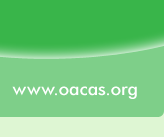 |
||
| HOME > Summer 2008 - Volume 52 - Number 2 | ||
If you are contemplating being a participant, or an instructor in a web-based course or just want to know what is happening with technology and social work, Web-Based Education In The Human Services: Models, Methods and Best Practices is a stimulating read. The book covers the expected areas of technology aided learning such as the strengths and weaknesses of web-based environments. What is intriguing about the book is the coverage of topics that will catch you off guard such as creating emotion in web based learning (McFadden), challenging the role of ethics in on-line learning (Biggerstaff), and designing delivery platforms that include learners with functional impairments (Steyaert). When I ordered the book I thought I would be getting a How to Guide to create an e-learning environment, instead I stumbled upon a wonderful volume of academic work on the topic of web-based learning. The book is a collection of academic studies, articles and position papers on the topic of web-based instruction and was simultaneously published as a single volume of the Journal of Technology in Human Services, volume 23 (1, 2, 3, 4) in 2005. Web-Based Education In The Human Services: Models, Methods and Best Practices is edited by Robert MacFadden, Brenda Moore, Marilyn Herie and Dick Schoech who are all social work educators. The book is truly a reflection of social workers staking a claim in the higher education arena. Robert MacFadden and Brenda Moore bring a Canadian perspective to the work along with contributors Sandra Collins, Paul Jerry, Jacquie Rice-Green, Gary Dumbrill, Patricia MacKenzie and Dora Leigh Bjornson. In fact out of 18 articles a third reflect Canadian social work practice. As human services considers web-based learning, the role of the educator shifts from “sage on the stage to guide on the side.” This book definitely helps shifts our cultural thinking about using technology in social work education and is well worth the read. About the Author Bernie Gallagher is the Director of Education Services at OACAS and a PhD Candidate, Memorial University, Newfoundland. Reference Robert MacFadden, Brenda Moore, Marilyn Herie and Dick Schoech. (2003) Web-Based Education In The Human Services: Models, Methods and Best Practices. Haworth Press. Previous article: The Child Welfare Supervisor as Stress Manager Next article: Abandoned |
||
| Download PDF version. To change your subscription or obtain print copies contact 416-987-3675 or webadmin@oacas.org |
||
|
 Web-Based Education In The Human Services: Models, Methods and Best Practices
Web-Based Education In The Human Services: Models, Methods and Best Practices
